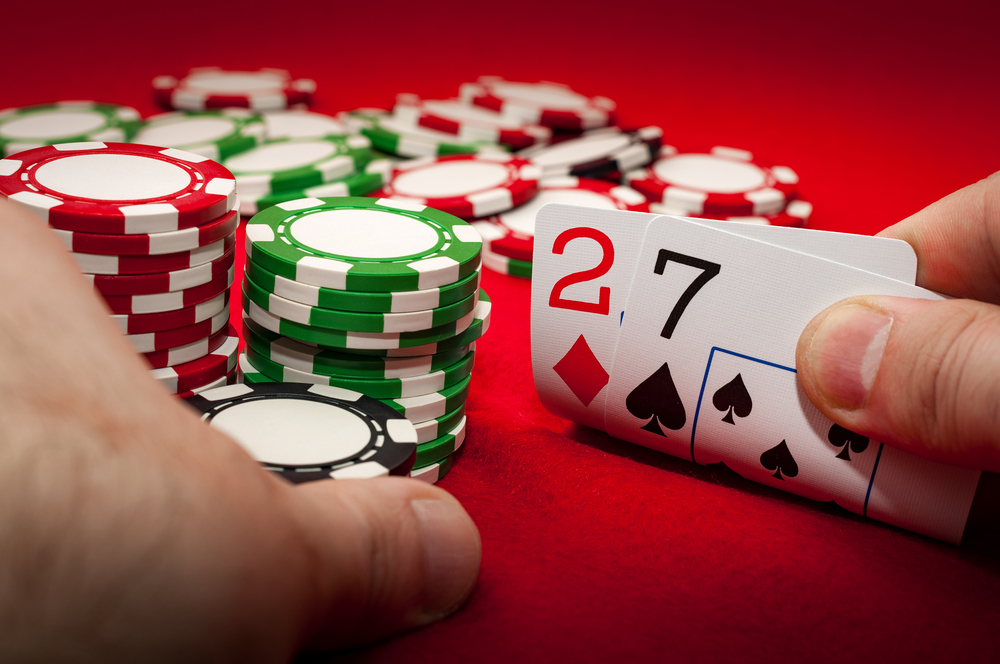
Counting cards is a basic strategy poker skill that any suitable poker player should have. It’s vital to help you improve your game and a forerunner to comprehending how to count your outs in poker. An out is any card that will build your hand either into a possibly winning hand or a stronger hand. Before you count your outs, it’s significant to have comprehensive knowledge in the ranking of hands to enable you to make a well-informed decision.
How to Count Cards
The general concept of online poker is similar to that of blackjack in any online casino in the UK. You should keep track of the remaining cards in the level, to help you evaluate your chances of striking big on the following streets. The first significant skill is to know the exact number of cards that can be of help to you.
Take your time to think for some time. Which cards have the potential to assist you on the turn? When you get your answer, check if you are in a position to count the precise number of cards which will promote you. Get to know which cards will offer you the best hand. Counting your outs is quite easy, and you can best understand by studying the process:
- Assuming you draw Kh and Ah in the hole, which is already a high hand to start with, and your opponent pulls 9d and Jd.
- The flop indicates 3h, Jh, 10c: your opponent already has a top set while you only have a flush pull, although nothing yet. At this level, the counting of your outs is very crucial.
- Your King and Ace are equally higher than the Jack and having three kings and three Aces left in the deck which can get drawn in the river or turn, and you will have six outs.
- Moreover, there are four queens in the pack to create a straight and nine hearts that can provide you with a flush, giving you 13 more outs.
- Nonetheless, you can’t count one card twice, so you will get 18 potential outs that hit a Jack Pair.
Speeding Up the Counting Process
Counting cards can take a lot of time because you have to count each card that can assist you potentially. However, there are some available shortcuts, founded on the kind of hand you hold.
- Gutshot straight draw – 4 outs
- OESD (Open-ended straight draw) – 8 outs
- FD (Flush draw) – 9 outs
- 1 Overcard – 3 outs
- 2 Overcards – 6 outs
- FD and OESD – 15 outs
- Bottom pair – 5 outs to 2 trips/pairs
Remembering this list will assist you to avoid taking a lot of time counting, in the midst of a hand. Learning this frees you up to focus on your opponents and also making the best moves.
Calculating the Pot Equity
Knowing the exact number of outs you have will enable you to create something more significant, how much equity you have in the hit. Equity is an elaborate way of evaluating how possible it is for you to make your hand. The four and two times rule is accurate enough to provide you with perfect decisions at your table.
“The 4 Times and 2 Times Rule”
This rule will apply when you are on the turn and flop only, so you shouldn’t use it on the river or pre-flop since there are no expected cards.
“2 Times and 4 Times Rule”
- On the Turn, always multiply the outs number by 2 to get pot equity
- On the flop, still, increase the outs number by 4 to get pot equity
For instance, if you get a draw with 12 potential out on the flop, you will multiply this by four, providing you with a 48% chance to get the right cards to build your hand. Calculating the pot equity enables you to ascertain your moves in play, minimising the additional wagers you have to make.
Putting Everything Together
The next thing on poker card counting is to begin considering how your pot equity correlates with your pot-chances. At times you may get away with earning reasonable little pot equity if you are getting exceptional pot-chances. Assuming you do not get good pot-odds, you will need to get more pot equity, for you to continue.
Once you understand how to count cards, it is vital to remember that it is not straightforward, and unlike in the example given earlier, you will never know the cards of your opponent. Consequently, you can only approximate their hand according to how they play each time the flop cards appear, the size of their wagers, and the likely combinations available.